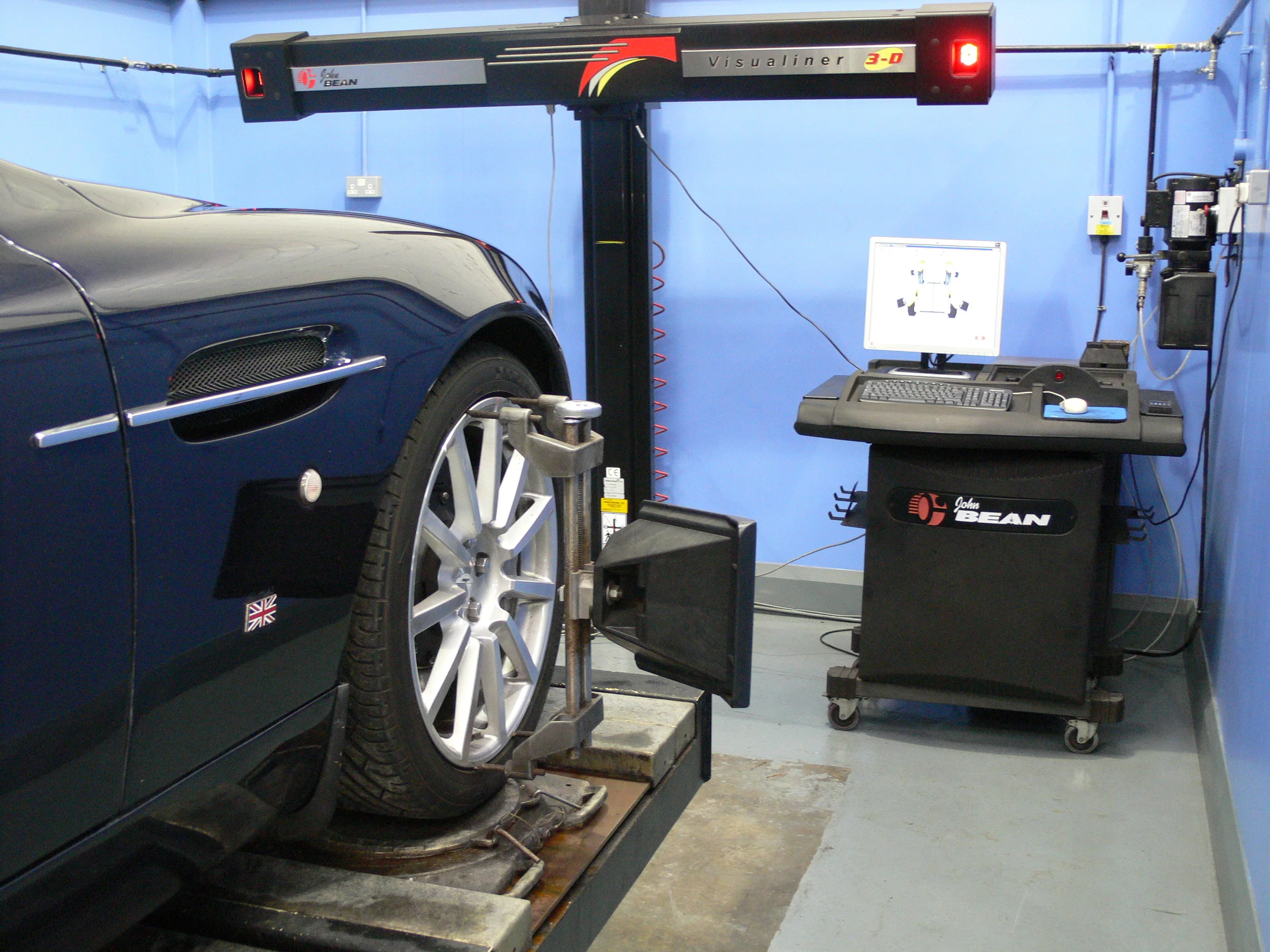Autobase Manchester provides laser wheel alignment servcies.
Although not as common as a service or MOT, wheel alignment is an essential part of your vehicle’s maintenance. It is a very important maintenance procedure, as incorrect wheel alignment affects the safety and handling of your vehicle. We are based in Irlam close to the centre of Manchester and we also provide a mobile wheel alignment service.
It is important to have your wheels aligned on a regular basis to avoid potential danger and prolong the life of your tyres. Incorrect wheel alignment will increase your tyre’s rolling resistance which results in the engine having to work harder, hence more fuel consumption, rapid wearing of tyres and increased driver fatigue.
Explanation of wheel alignment terms
Wheel alignment refers to how flat your tyres sit on the ground, and how straight they are pointed down the road. In technical terms, your vehicle’s wheel alignment can be measured in terms of (1) camber, (2) toe, and (3) caster.
Castor
Castor is used to give straight–line stability and directional control at vehicle speed. Castor also assists self-centring of the steering after a steering turn has been made. Castor can simply be described as the backward or forward tilt of the MacPherson strut or hub assembly when the vehicle wheel is viewed from the side.
Positive (+) castor is when the strut top leans towards the rear of the vehicle, and is most commonly used on modern vehicles. Negative (-) castor is when the strut top leans towards the front of the vehicle. Positive castor provides better directional stability and self-centring action than negative castor. Castor is achieved by placing the theoretical pivot point in front of the actual tyre contact point.
Camber
Camber is the inward or outward angle or lean of the wheels as seen from looking at the front of the vehicle and is defined as follows:
• Camber is positive (+) when the wheel leans out at the top
• Camber is negative (-) when the wheel leans in at the top
• Zero (0) camber is when the wheel is vertical
Camber applies to both front and rear wheels of the vehicle. Camber is used to distribute the vehicle load evenly across the tyre/road contact print, in order to minimize tyre wear. Camber can also be used to alter the handling characteristics of a vehicle, sometimes at the expense of tyre wear. Negative camber can improve cornering, by ensuring a good tyre/road contact print during cornering. Incorrect camber can cause steering pull, as well as excessive tyre wear.
Toe-in and Toe-out (front and rear)
Toe-in and toe-out are generally the most understood of all the wheel alignment terms. When measuring toe we are looking at how parallel the wheels are in relation to each other, when viewed from above. If the wheels are closer together at the front then positive (+) or toe-in is apparent. If the wheels are closer together at the rear then negative (-) or toe-out is apparent.
See the diagrams on this page. The reason why we have toe-in or toe-out is that the position of the wheels change between the vehicle being stationary (static) or moving (dynamic).
How we Align
Perfect Alignment has the latest imaging alignment technology system; the John bean Visualiser 3D² assists our technicians to give your vehicle a comprehensive alignment check, detection and correction service. Each vehicle is provided with an accurate, real-time measurement that reduces the time your vehicle will be off the road.
The advanced software package used at Perfect Alignment means we are able to detect vehicle specific anomalies including modified and customised vehicles.
Our technicians can identify and rectify problems such as Driver fatigue and Driver Complaints using our specialist diagnostics software.
The vehicle is registered on the system to establish manufacturer recommended alignment settings
Alignment targets are fixed in position on the wheels
Roll back test is carried out to ensure accurate laser targeting
Castor Swing is measured
Digital Alignment results are displayed following laser targeting
Alignment problems indicated in red will result in un-even tyre wear and decreased fuel economy if not corrected.
Required alignment adjustments are made to rear wheels
Required alignment adjustments are made to front wheels
Adjustments are checked for accuracy
Digital readout of correctly aligned wheels















